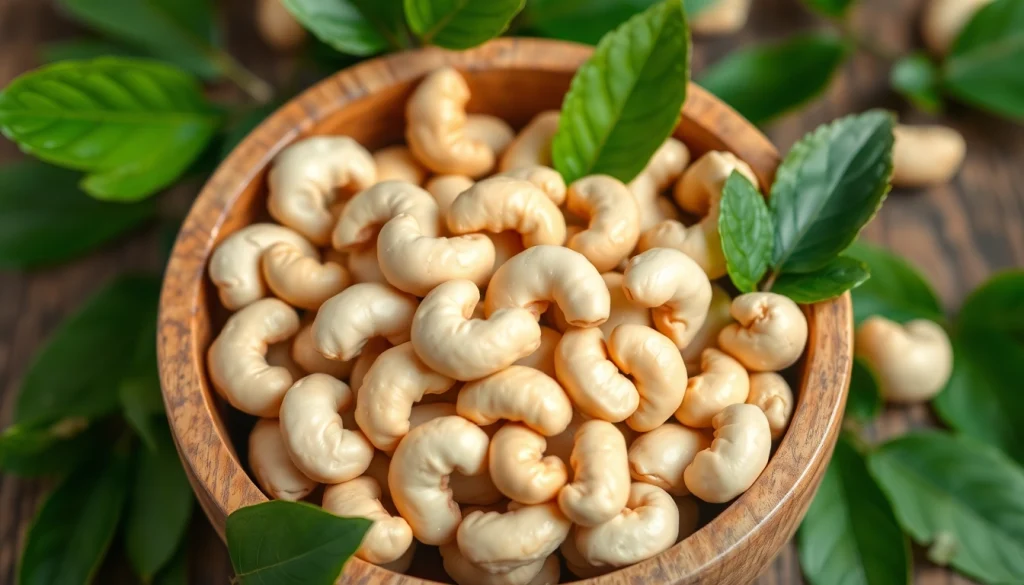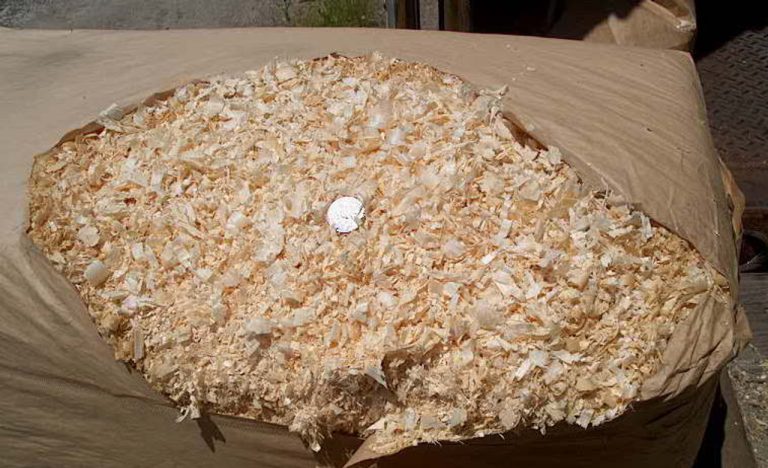
1. Introduction to Cashew Nuts
1.1 What Are Cashew Nuts?
Cashew nuts, scientifically known as Anacardium occidentale, are actually the seeds of the cashew apple, a tropical fruit produced by the cashew tree. Native to Brazil but now cultivated in various tropical regions around the world, cashew nuts have a distinctive shape and rich flavor profile that make them a popular ingredient in many culinary applications. They are frequently consumed raw, roasted, or roasted and salted, and are commonly used in snacks, desserts, and savory dishes alike.
These crunchy seeds are not just delicious but also packed with nutrients. As you delve deeper into the world of cashew nuts, you’ll discover their numerous health benefits, culinary versatility, and unique characteristics that set them apart from other nuts.
1.2 Nutritional Profile of Cashew Nuts
Cashew nuts deliver a robust nutritional profile; a typical serving of a one-ounce (28 grams) portion contains about 157 calories, 12 grams of fat (primarily healthy monounsaturated fats), 9 grams of carbohydrates, and 5 grams of protein. They are also an excellent source of essential minerals such as:
- Copper: Critical for energy production and the formation of connective tissues.
- Magnesium: Vital for bone health and nerve function.
- Phosphorus: Important for bone health and energy levels.
- Zinc: Crucial for immune function and skin health.
- Iron: Essential in forming red blood cells.
Additionally, cashews are rich in antioxidants, which help combat oxidative stress in the body. This combination of nutrients positions cashews as not just a delightful snack but also a valuable dietary component.
1.3 Origin and Cultivation of Cashew Nuts
The cashew tree is believed to have originated from the northeastern coast of Brazil. Indigenous people and Portuguese explorers were among the first to utilize this unique tree, which became widely cultivated throughout the tropics including parts of Africa and Asia. Today, countries like India, Vietnam, and Nigeria are significant producers of cashew nuts.
In terms of cultivation, cashew trees favor well-drained soils and thrive in warm climates with adequate rainfall. They typically reach a height of 20 feet and produce a harvest of cashews annually. Harvesting these nuts requires careful handling, as the shell contains an irritating oil called anacardic acid, which must be removed before consumption.
2. Health Benefits of Cashew Nuts
2.1 Heart Health and Cholesterol Lowering
One of the most significant health benefits of cashew nuts lies in their potential to promote heart health. Their unique composition of fatty acids can help reduce harmful low-density lipoprotein (LDL) cholesterol while boosting high-density lipoprotein (HDL) cholesterol, thereby improving overall heart health.
Research indicates that incorporating cashews into a balanced diet is associated with a lower risk of coronary heart disease. A study published in the National Institutes of Health found that participants who consumed nuts regularly had a 37% lower risk of heart disease compared to those who did not.
Additionally, cashews contain magnesium, which has been shown to help lower blood pressure levels, further enhancing cardiovascular health.
2.2 Nutrients that Boost Immunity
Cashew nuts are loaded with vitamins and minerals that can significantly enhance the immune system. The high levels of copper found in cashews play a vital role in iron absorption and immune function. Moreover, the presence of antioxidants such as vitamins E and K, along with phytochemicals, contribute to protecting the body against infections and diseases.
Regular consumption of cashews can lead to improved immunity, making it easier for the body to fight off colds and other ailments. They also have anti-inflammatory properties that can aid in reducing the severity of chronic diseases connected to inflammation.
2.3 Cashew Nuts and Weight Management
Contrary to the common misconception that nuts lead to weight gain due to their calorie density, studies suggest that cashew nuts can aid in weight management. Their protein and fiber content promotes satiety, helping you feel full for longer periods. This may prevent overeating and snacking on unhealthy foods.
An analysis of various studies regarding nut consumption indicated that individuals who regularly consumed nuts, including cashews, tended to have lower body weight and body mass index (BMI) when compared to those who did not consume them. This makes cashews a nutrient-rich and satisfying snack choice for those looking to maintain a healthy weight.
3. Culinary Uses of Cashew Nuts
3.1 Incorporating Cashew Nuts into Meals
Cashew nuts’ versatility in the kitchen is one of their most appealing attributes. They can be enjoyed in a multitude of ways, enhancing both flavor and nutrition in various dishes. Here are some ideas for incorporating cashews into your meals:
- Stir-fries: Add roasted cashews for a crunchy texture and nutty flavor.
- Salads: Toss chopped cashews into salads for added protein and crunch.
- Curries: Cashews can be blended into creamy sauces or used whole to provide richness.
- Granola and Trail Mix: They pair excellently with dried fruits and other nuts.
- Vegetarian Dishes: Use cashews to create creamy sauces as an alternative to dairy in recipes such as pasta or pizza.
3.2 Making Cashew Nut Butter and Cheese
Cashew nuts are an exceptional base for both nut butter and dairy-free cheese alternatives. Making cashew nut butter is simple: blend roasted cashews in a food processor until they reach a smooth, creamy consistency. You can add a hint of salt or sweeteners like honey or maple syrup for extra flavor.
In terms of cheese, soaked cashews can be blended with nutritional yeast, lemon juice, and spices to create a delicious, creamy cheese spread that works well on crackers or as a topping for salads.
This versatility makes cashew nut butter and cheese an excellent addition to vegan and lactose-intolerant diets.
3.3 Stylish Snack Ideas with Cashew Nuts
Cashew nuts also make for delightful snacks, whether eaten on their own or mixed with other ingredients. Here are some stylish snack ideas:
- Cashew Energy Balls: Combine chopped dates, oats, and cashews for a healthy energy booster.
- Spicy Cashews: Toss raw cashews with spices and bake them for a savory snack.
- Cashew-based Smoothies: Add a few cashews to your morning smoothie for an extra boost of protein and creaminess.
- Nutty Cheese Crackers: Use cashew cheese to create a dip for crackers or vegetables.
4. Cashew Nuts in the Wider Context of Nutrition
4.1 Comparing Cashew Nuts to Other Nuts
When comparing cashew nuts to other popular nuts, such as almonds or walnuts, each type has its unique nutritional benefits. For instance, while almonds have a higher fiber content, cashews provide more iron and magnesium per serving. Each nut brings a distinct flavor and nutrient profile, making them suitable for different applications in cooking and snacking.
Ultimately, including a variety of nuts in your diet can provide a balance of benefits. Cashews, with their creamy texture and versatility, are an excellent addition to a mixed nut selection.
4.2 Allergies and Nutritional Considerations
While cashew nuts are generally safe for consumption, they can pose allergy risks for some individuals. Cashew allergies are relatively common, particularly among those who are already allergic to other tree nuts. Symptoms can range from mild reactions to severe anaphylaxis.
It’s vital for individuals with nut allergies to consult their healthcare provider before incorporating cashews or any new food into their diet. For those without allergies, cashews serve as a nutritious choice. However, moderation is essential due to their calorie content.
4.3 Best Practices for Consuming Cashew Nuts
To fully enjoy the benefits of cashew nuts, consider these best practices:
- Moderation: Aim for a handful (1 ounce) as a recommended serving size to manage calorie intake.
- Mixing: Combine cashews with other nuts and dried fruits to create a balanced snack.
- Nut Butter Usage: Use cashew butter just as you would peanut butter in smoothies, sandwiches, or as a dip.
5. Conclusion and Recommendations for Enjoying Cashew Nuts
5.1 How to Choose Quality Cashew Nuts
When purchasing cashew nuts, look for whole, uniform nuts without any blemishes or discoloration. Ideally, opt for raw or dry-roasted cashews that do not contain added oils or excessive salt. The packaging should also be intact and sealed to preserve freshness. Organic options may be preferable if you wish to avoid pesticides.
5.2 Storage and Shelf Life of Cashew Nuts
To maintain their quality, store cashew nuts in an airtight container in a cool, dark place. They can last for several months when stored properly. For extended freshness, consider refrigerating or freezing cashews, especially if you buy in bulk.
5.3 Final Thoughts on Cashew Nuts Consumption
Incorporating cashew nuts into your diet can bring unparalleled flavor and numerous health advantages. Whether you enjoy them as a snack, as part of a meal, or in a nut butter, their versatility is hard to match. With an understanding of their nutritional profile and best practices for consumption, cashews can become a staple of your healthy eating repertoire. Consider making cashew nuts a regular part of your meals to enjoy their benefits to the fullest.






